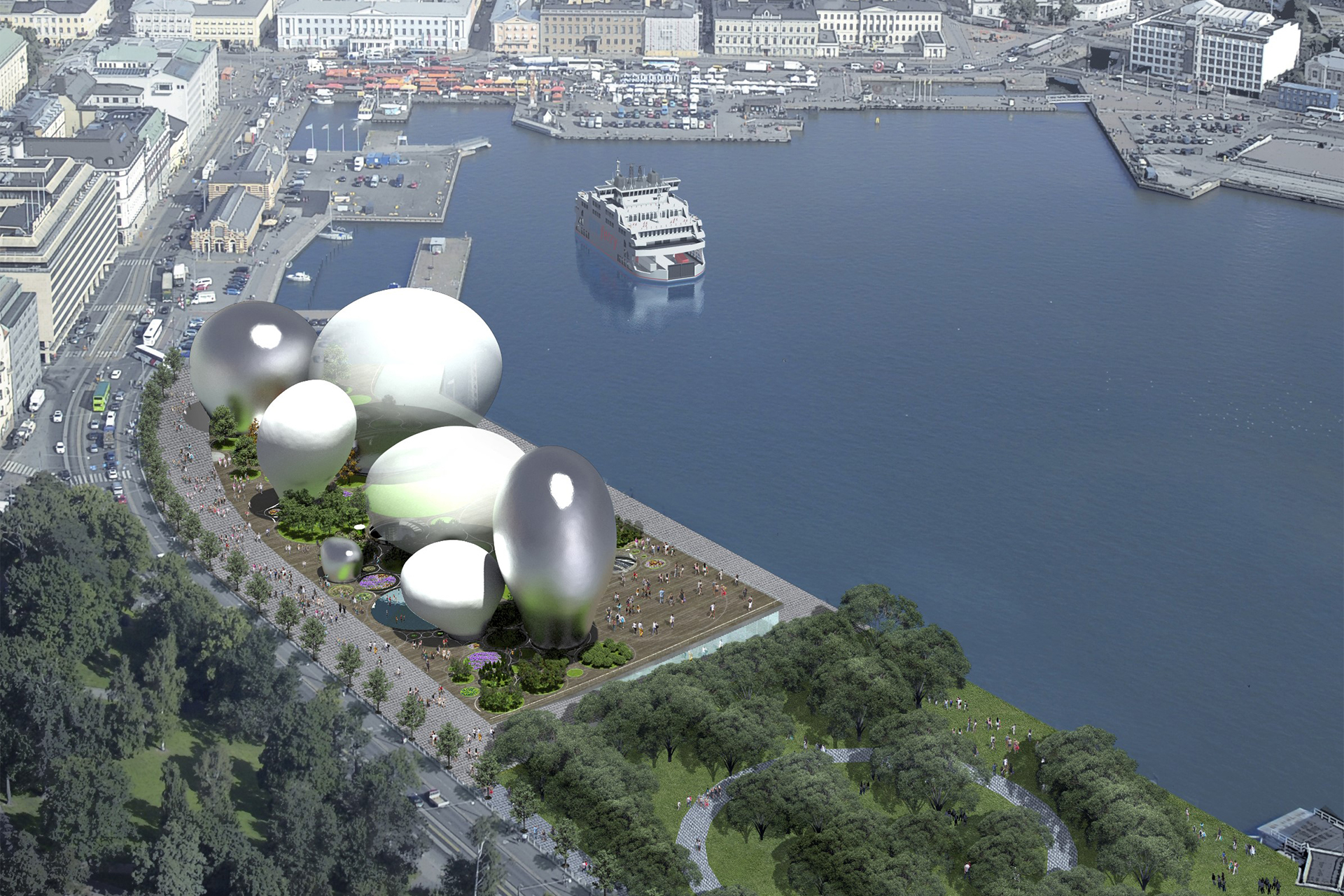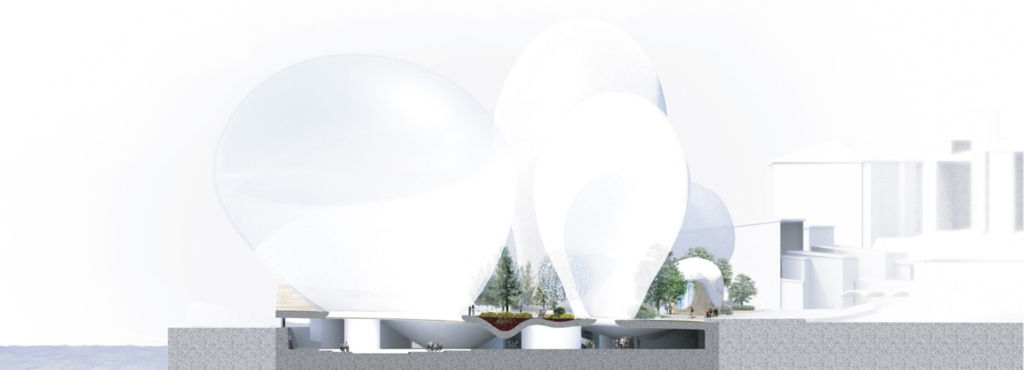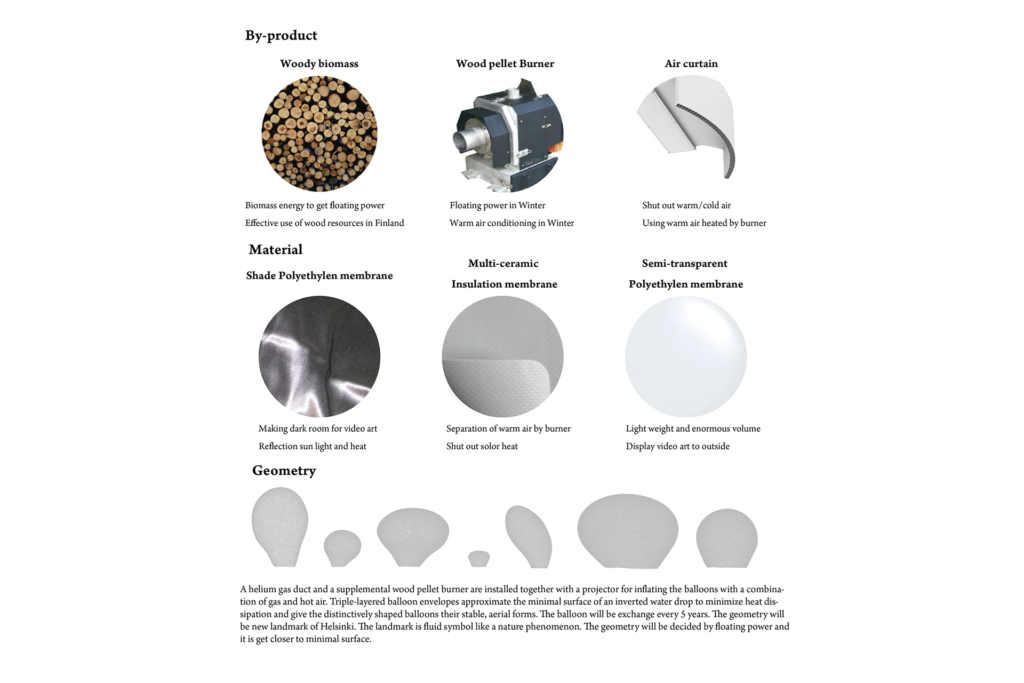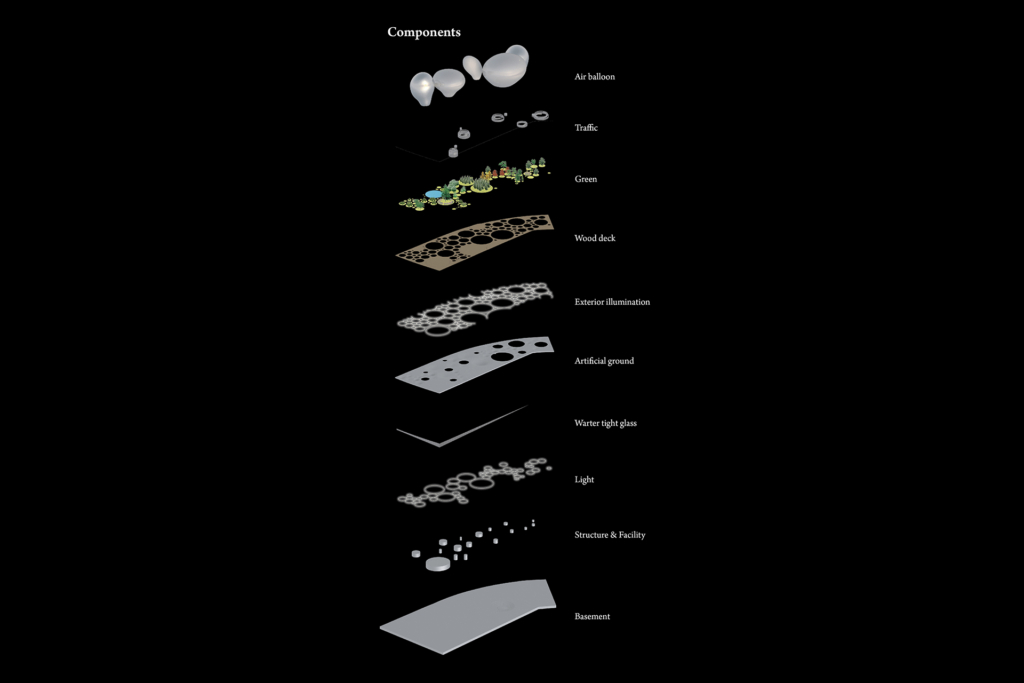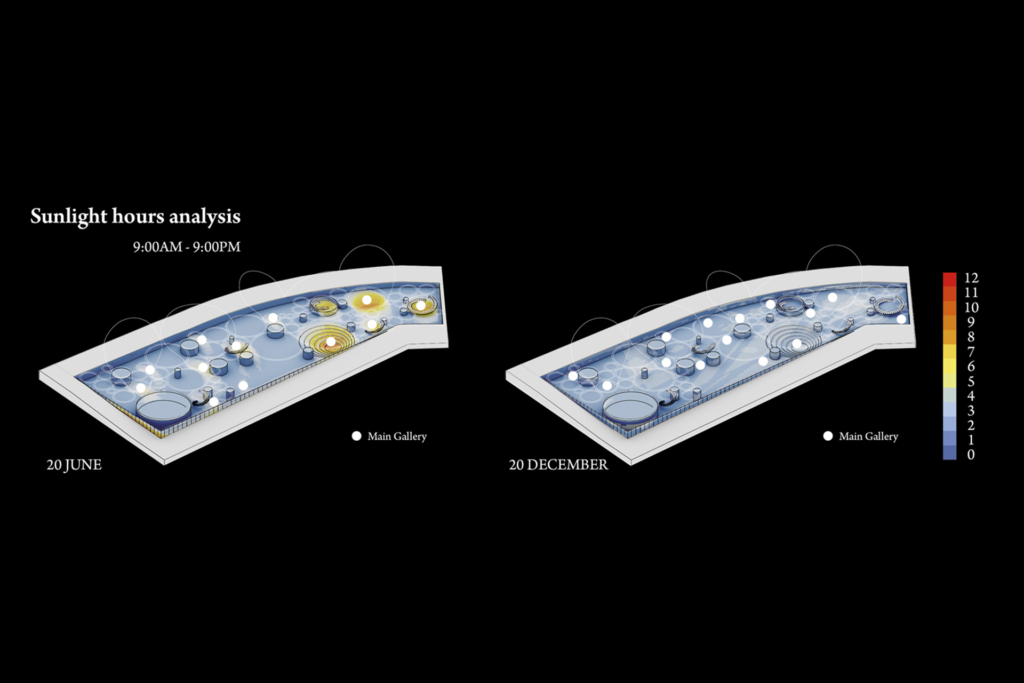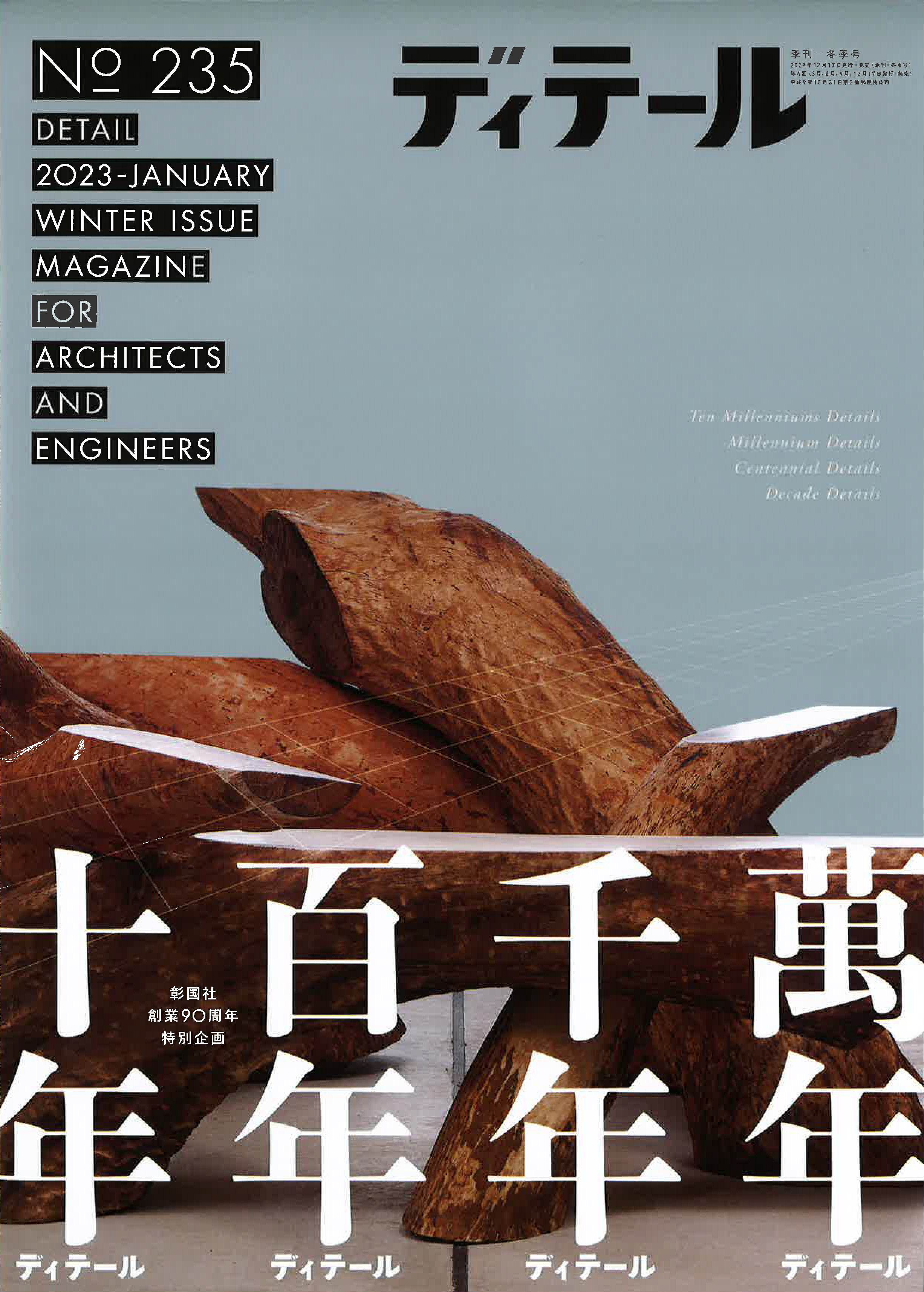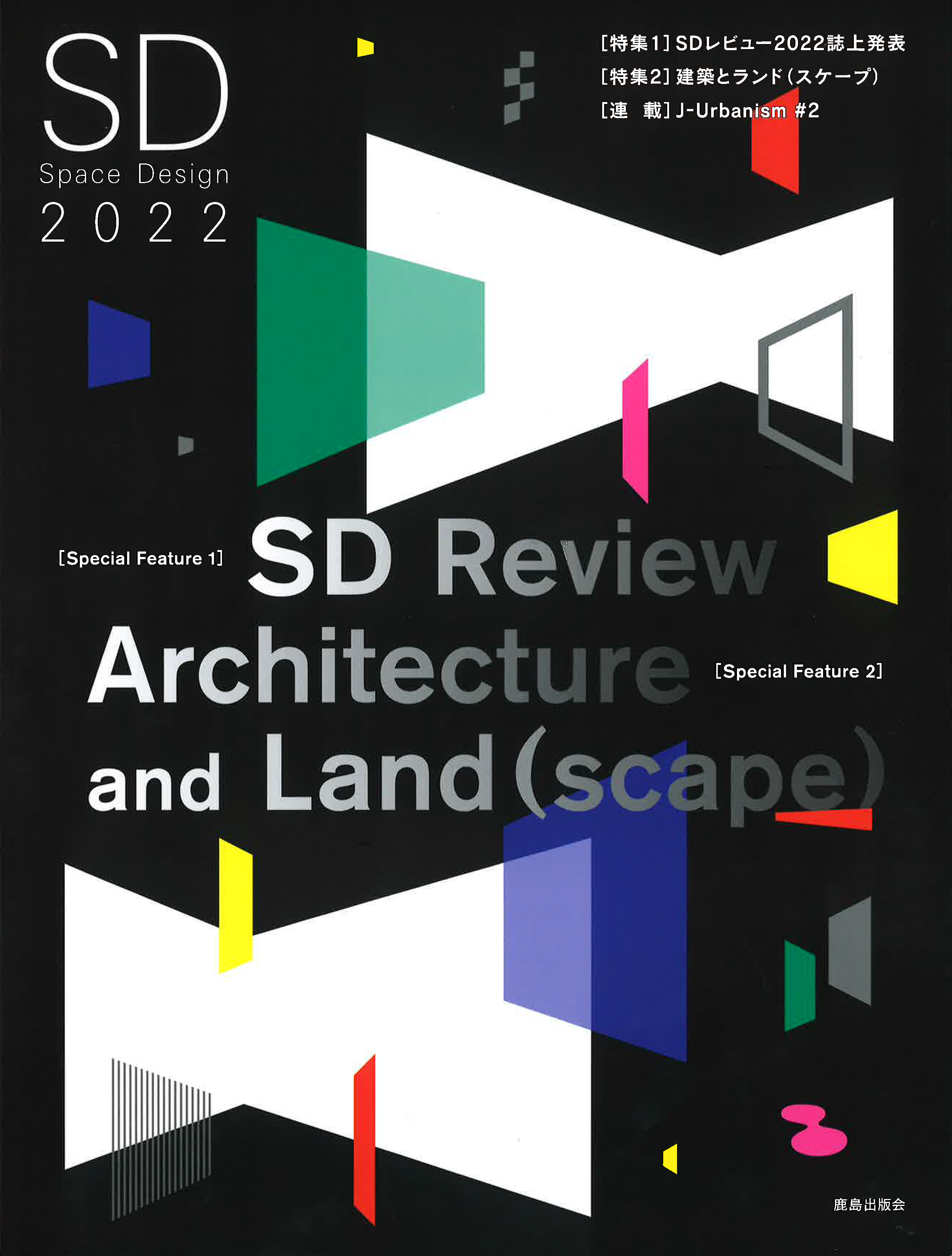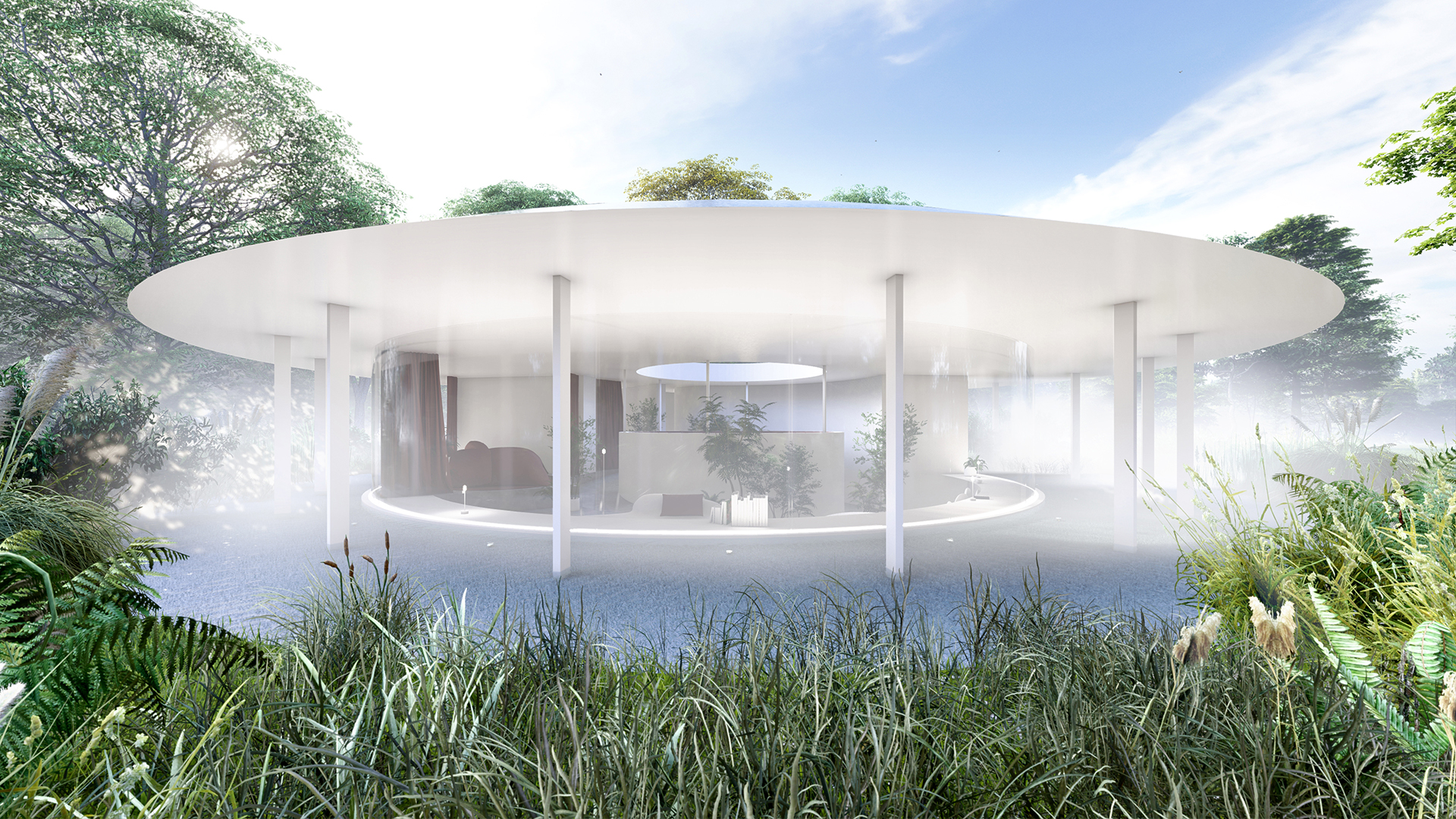architecture
float
Location
Helsinki, Finland
Year
Sep. 2014
----
Museum for Environmental art and Media Art
----
Guggenheim Helsinki Design Competition
Architect
Aki Hamada Architects
この美術館は展示室が雲のように浮き上がる、メディアアートなどの最先端のアートを展示する美術館である。フィンランドの日照時間は、冬は極端にが短く、夏は極端に長い。その特異な日照時間を利用して、冬は映像展示を主とし、夏はフィンランドの特徴的な太陽光を活かす現代アートの展示を行う。
この美術館には巨大な気球が生えていて、夏は大きな作品の背景として、冬は大きな映像投影面として使われる。環境アートやメディアアートを主に扱うことによって、美術館はその大部分が物質から解放される。メディアアートの多くはスケーラブルでサイトアジャスタブルなものが多い。そのようなアートを中心として展示する美術館にとっては、従来のホワイトキューブよりも、より固有性の高い特徴的な空間の方が、そこにしかない、そのときにしかありえないアート作品を作家とインタラクティブに創発することができる。
フィンランドの夏の色彩豊かな空気の色に対して、抽象的な白い気球と光をやわらかく反射する気球が雲のように漂う。冬は昼過ぎには暗くなるため、パブリックな屋外でも映像を使ったナイトミュージアムを催すことができる。気球の内外で投影された映像が、彩度の低いヘルシンキの風景にオーロラのように色をつけていく。
Enormous balloons tethered to this museum serve as a backdrop for large installations in summer and as a huge projection surface in winter. By centering on scalable and site-adjustable media arts, the museum is, for the most part, free from physical materials. Singularly unique spaces interactively emerge through artist collaboration that is limited to a time and place.
While the balloons drift like clouds in the rich hues of summer, nighttime video displays can be held outdoors in the winter as the balloons color the Helsinki landscape like an aurora.
CLICK
港の反対側の道路面の高さに沿うようにして人工地盤をつくり、道路のどこからでも人工地盤へアクセスでき、自転車用道路や歩道からのシームレスなつながりをつくる。都市側からみると、建築的なヴォリュームは見えず、緑の起伏と木のデッキと、気球があるのみである。海側のデッキは港の展望台としても機能し、観光スポットにもなり、ヘルシンキの日常生活の一つにもなる。
美術館は地下に配置し、プログラム毎の要求面積、設備コアの面積、構造の断面寸法、採光のためのトップライトの面積をもとにして、円形平面を充填させるようにした平面配置とする。地上階はフリーエリアで、公園としてのパブリックな場所として計画する。そこではパブリックアートの展示や屋外インスタレーション、イベントなどが行われる。ポート側をメインエントランスとするが、公園側の道路からのアクセスもフリーにすることで、より開かれた美術館や港の展望台として機能する。円形に分割された庭一つ一つにはテーマのある庭をつくる。スラブが凹んだ部分には_種類の異なる木々を植える。スラブがフラットな部分には、_種類の草花を植え、一年を通して四季による変化を楽しむことができる公園となる。
人工地盤のスラブが起伏し、凹んだところが樹木のためのスペースを生み、それが地下のワンルームのスペースに緩やかな垂れ壁としてあらわれる。フラットなスラブの上には丘状に土壌を盛り、大きなデッキは人々が集まるためのスペースになる。円形平面の周縁の屋外にはアッパー照明を埋め込み、屋内には間接照明として、円充填した平面が可視化され、それが人々の動線になる。恒久的で土木的な人工地盤は、その起伏と構造・設備のコアによって約20mスパンのRC造の構造体である。それに対して軽量な気球が取り付き、床面積に比べて巨大な気積のある空間を軽やかにつくることができる。
An artificial ground, accessible from anywhere on the road, creates a seamless link to the bicycle paths and walkways. From the city, only the wooden deck, balloons and undulating greenery can be seen without any visible architectural bulk. The deck doubles as a port-viewing platform for both tourists and locals.
The museum is located underground in circular patterns, based on the areas required for the programs, core facilities, structure and top light. A free area above ground is designed as a public park for outdoor art exhibits, installations and events. Although the main entrance is on the port side, the museum and viewing platform can be freely accessed from the park road. To enjoy the changing seasons in the themed circular gardens, there are 16 different types of trees in concave sections and 30 types of flowering plants in flat sections.
The 20-meter span slab foundation undulates with an earthen mound and a large deck on the flat area for gathering people. Indirect indoor lighting and upper illumination in the circular, outdoor periphery guides the flow of people. In contrast to the reinforced concrete foundation, a vast and airy usable space is created by installing light balloons.
気球を設置する開口部にはバーナーとプロジェクターを設置し、熱気球の仕組みで膨らませ、それに対して映像をプロジェクションさせる。球皮は二層構造とし、そこにバーナーで熱した空気が上昇して膨らむ。水滴を逆さまにしたようなminimal surfaceに近づけた立体裁断とすることで、熱の発散を最小限にし、空中で安定に保つ形態としながら、各々の気球が固有性のある形態とする。
夏は自然光を多く使う展示となり、冬は映像を多く使う展示となるため、基本照明を抑えながらグラデーショナルな明暗を展示室につくる。気球をふくらませる熱は、木質ペレット焚きバーナーを用いることで、森林の多いフィンランドの木質バイオマスの利用を促進する。その熱は屋外においても気球の周縁を暖かくし、快適な屋外環境をやわらかくつくる。土木的なスケールの厚いスラブは、大きなプランターとしての建築である。土壌が断熱としても機能し、地下に安定的な環境がつくられる。時間が経って公園として成熟していくことで隣地の森との連続性をつくり、海と都市をつなぐ環境としての建築をつくる。
この歴史的な場所に重い建築はふさわしくない。地盤としてのパブリックな人々が集まる恒久的な公園と、仮設的で空気のように軽く、しかしながら巨大な気積をもつ建築が、フィンランドの気候と呼応するように漂い、新しいヘルシンキの風景をつくり上げるのである。
A helium gas duct and a supplemental wood pellet burner are installed together with a projector for inflating the balloons with a combination of gas and hot air. Triple-layered balloon envelopes approximate the minimal surface of an inverted water drop to minimize heat dissipation and give the distinctively shaped balloons their stable, aerial forms.
As natural light is heavily used in summer and video images in winter, basic lighting is limited in the gallery with gradational shading. The burner fosters the use of woody biomass in heavily forested Finland, even while its heat provides warmth and an inviting atmosphere outdoors. With time, this architecture matures as a park, creating continuity with the adjoining forest and an environment that links the sea and the city.
A massive construction is ill-suited to this historic location. With a permanent public park as its foundation, this architecture is temporary and light while possessing vast amounts of usable space, drifts harmoniously with the Finnish climate and creates a new Helsinki landscape.
